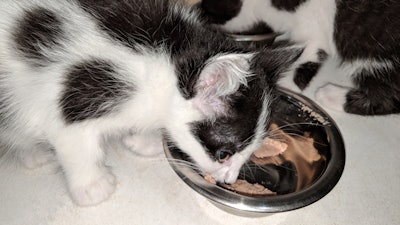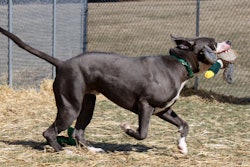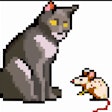
Beyond all the trends and fads, nutrition is the most important goal of the dog, cat and other pet food industries. Pet owners, veterinarians and pet food makers all aim to ensure companion animals eat complete and balanced diets. Nevertheless, communication among these groups can be complicated. For example, veterinarians and pet owners may differ in their assessments of pets’ obesity. Veterinarians’ recommendations can fulfill an important role for pet owners looking for ideal diets for their companion animals. However, four main barriers may hinder communication about nutrition among pet owners and vets. Researchers identified their challenges in a study published in the Journal of the American Veterinary Medical Association.
For the study, 18 veterinarians from Maryland, Michigan, Virginia, Washington DC and West Virginia participated in five study groups conducted via Zoom in 2021. Four main barriers to nutrition communication emerged.
1. Time
Veterinarians had limited amounts of time to spend with each pet owner. During that time, they usually had a particular problem to address leaving little time to discuss the general topic of nutrition.
“Furthermore, several participants also suggested that they struggled to make time for outside research and education in regard to nutrition,” the researchers wrote.
2. Misinformation and information overload
Like a recent TikTok rumor about Purina PetCare products, the internet can serve up more misinformation than facts to pet owners. Veterinarians in the study felt that disreputable sites and untrustworthy resources were easier for pet owners to find online. Compounding the problem, those websites can be more appealing to clients than those with actual scientific data and veterinary backing.
“Any search on pet nutrition yielded pages of blogs, websites, and other platforms where participants expressed that nonprofessionals could offer their opinions and advice,” the researchers wrote.
3. Pet owners’ apprehension toward new information
Even when veterinarians did have time to talk with pet owners about nutrition, those sources of misinformation made clients resistant to empirical information and medical opinions. Barriers to communication with pet owners were multifaceted. Study participants described how pet owners often come in with preconceived notions about nutrition (mainly from misinformation found online and from outside sources like breeders and pet store employees). Pet owners sometimes did not believe that their pets’ weight was a health issue. Clients tended to have a mindset that the owner is the expert on their pet’s health, and that veterinarians were either uneducated about pet nutrition or biased by pet food company sponsorships.
4. Veterinarians’ confidence in nutrition knowledge and communication skills
In some cases, veterinarians agreed with pet owners that their university educations lacked a focus on nutrition and its effects on health. Even those vets who did feel well educated about nutrition didn’t think they had received enough education on how to communicate that nutrition knowledge to pet owners.
“Regardless of instruction levels, participants overall agreed that they possessed low confidence when speaking with clients about nutrition,” the study authors wrote. “Practitioners said they struggled with convincing owners that veterinarian-recommended foods are valuable because there is a lack of reputable resources that support their recommendations. Participants indicated this is especially true when clinicians are attempting to propose a change of diet for animals that are healthy.”
Solutions to pet owner communication barriers
Along with noting problems, the study groups also discussed potential solutions. Veterinarians suggested improving communication and nutrition education at the university level and after graduation. For pet owners, veterinarians called for more materials written in easy-to-read and understandable language. Many participants in the study had collected their own resources to share with clients during visits and send home with them. Along with the veterinarians themselves, technicians and support staff should be empowered to lead conversations about nutrition with pet owners, as long as the message remains consistent.
“Investigating and developing best practices for how nutrition can be effectively incorporated into the day-to-day realities of a busy veterinary practice are likely needed to further support the veterinary profession’s efforts to incorporate nutrition within most consultations,” the study authors concluded. “Further research with veterinarians, veterinary technicians, veterinary support staff, and pet owners is needed to create effective solutions to help break down barriers to nutrition communication in veterinary medicine.”



















